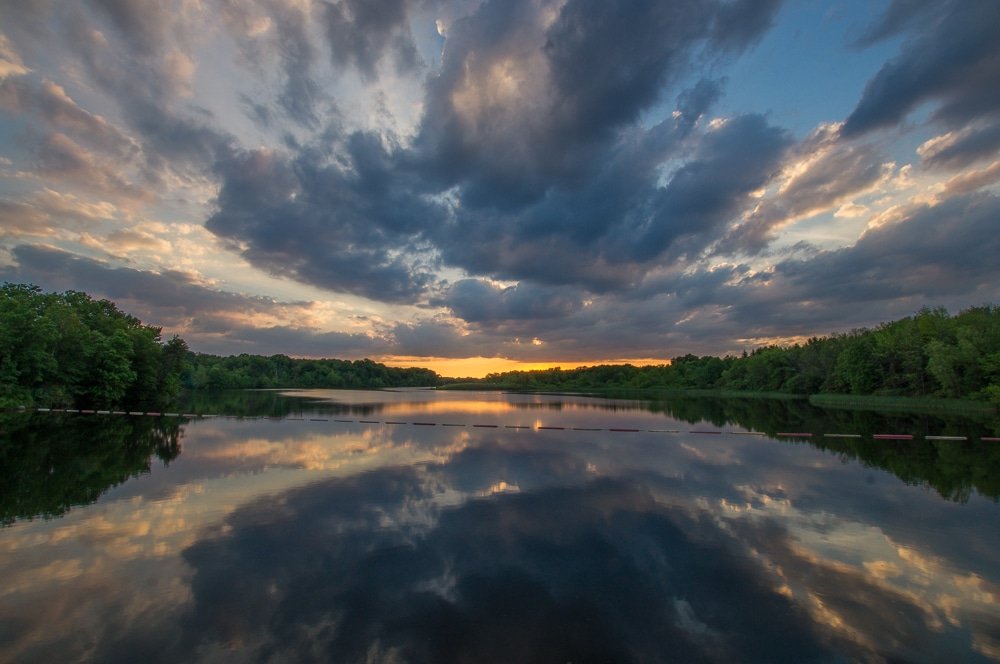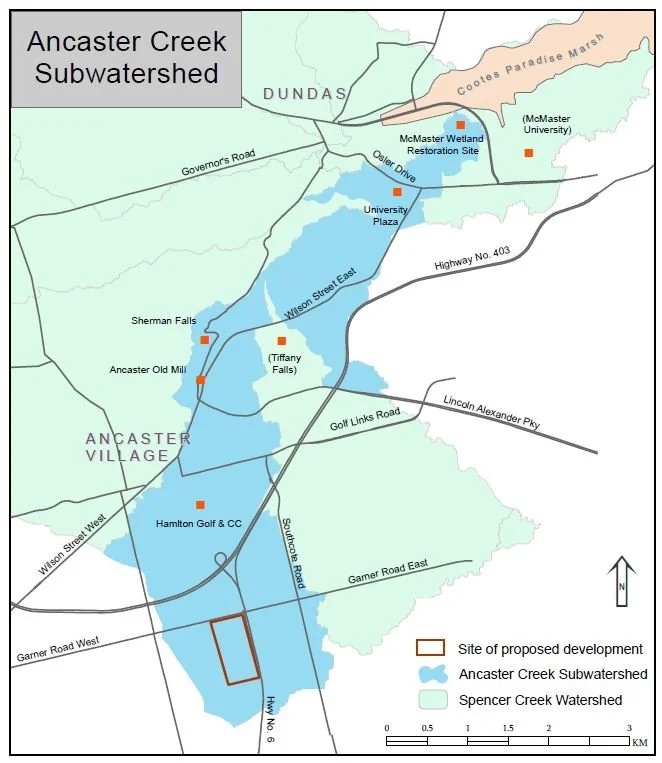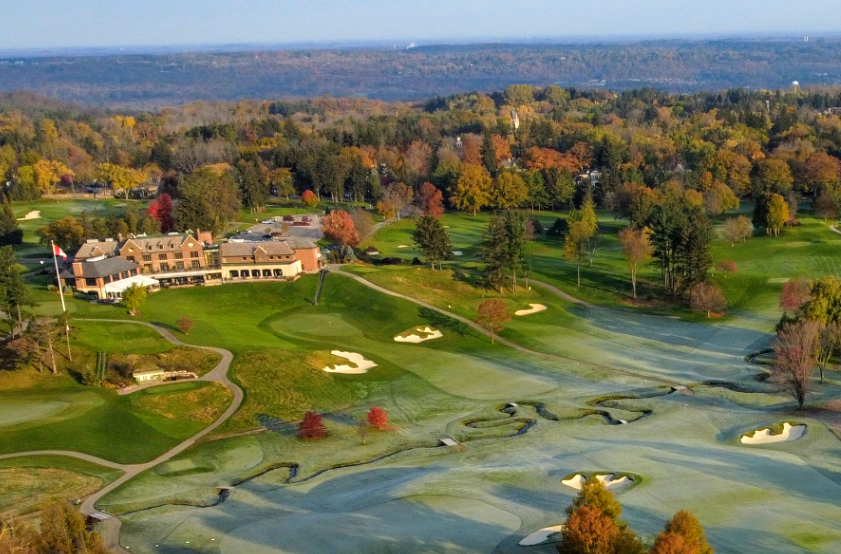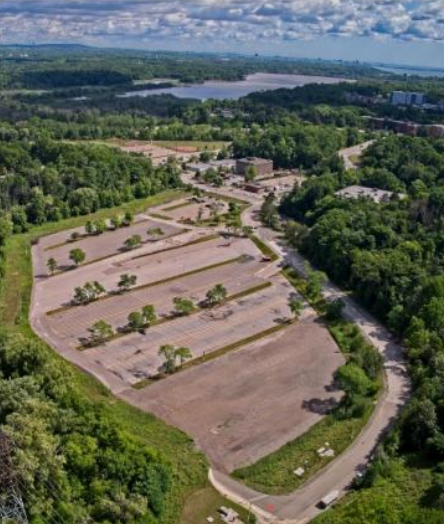
Follow the Flow
Are you downstream from the Marsh?
The Ancaster creek flows from the Marsh, through the Hamilton Golf and Country Club, through Ancaster and over Sherman Falls on its way to Cootes Paradise. Ancaster Creek is a unique coldwater habitat that supports species that depend on cool temperatures for their survival. It runs through parts of Ancaster, the West Mountain, Dundas and Ainslie Wood. Communities and wildlife across the watershed could be harmed by destroying this Marsh, the headwaters of Ancaster Creek.
Water Connects Us All
Follow the water on it’s journey from the Marsh to Cootes Paradise to learn more about what’s at stake.
The Headwaters - Garner Rd. Marsh
The headwaters of the Ancaster Creek Subwatershed are situated in Mount Hope, the highest point between Lake Erie and Lake Ontario waters of this great watershed head north, flowing down the escarpment into the coastal waters of Cootes Paradise and eventually into Lake Ontario. The Garner Marsh is the last originally located wetland in the headwaters and is a sanctuary for all types of birds, amphibians, reptiles, insects, and bats. An endangered Blanding’s Turtle was found crossing Garner Road in front of the Marsh. In the winter, Tundra Swans take refuge here during their annual migration, resting their wings before resuming their long journey.
Photo: Richard Leitner - The Hamilton News
Blanding’s Turtle
Meandering Along the Mountain
The Ancaster Creek meanders through backyards, follows trails, traverses two Environmentally Significant areas (ESAs) on the mountain, one at the Hamilton Golf and Country Club, and the next at Tiffany Falls.
Crashing Over the Escarpment
The Ancaster Creek transforms into Sherman Falls as it tumbles over the escarpment in its race to Cootes Paradise. Also known as Fairy Falls, this 17 meter high curtain waterfall is a jewel in the crown of the “City of Waterfalls”.
Runoff from the proposed development could lead to high levels of salt and other pollutants. How will this impact Sherman Falls?
Sherman Falls photo courtesy of Tourism Hamilton
Flowing Into the Ancaster Creek Valley and the Dundas Valley Environmentally Sensitive Area…
Photo courtesy of the Hamilton Conservation Authority
Along the Designing Paradise Project
Other rehabilitation efforts downstream are also being put at risk. McMaster University, is currently undertaking a bold initiative to reclaim the ecologically sensitive wetland near parking lot M. “We’re working together to green our west campus and replace our parking lot with a mosaic of wetlands at McMaster University, but there’s still a lot of planning and work ahead,” said Judy Major-Girardin, a professor in the School of Arts and one of the leads on the project.
Daniel Coleman, a McMaster English professor and author of Yardwork, a historical book about Cootes Paradise, said the creek is just one of two coldwater creeks left running into Lake Ontario. "This cool water is necessary to maintaining the temperature of Cootes Paradise for spawning – and now that Cootes is warming, the health of these creeks is more important than ever," he said in a release from the school.
McMaster Parking Lot M - soon the be resorted to a its former glory
The design concept of the Parking Lot M future wetland
Into Cootes Paradise
Cootes Paradise, a beloved natural area, provincially significant wetland and nationally important bird area is already burdened by the Sewergate fiasco where 24 Billion litres of human waste leaked into the sensitive marsh for four years between 2014-2018.
Cootes Paradise - photo credit Anita Thomas
How will these changes to the headwaters of one of its tributaries further impact the already struggling health of Cootes Paradise?










